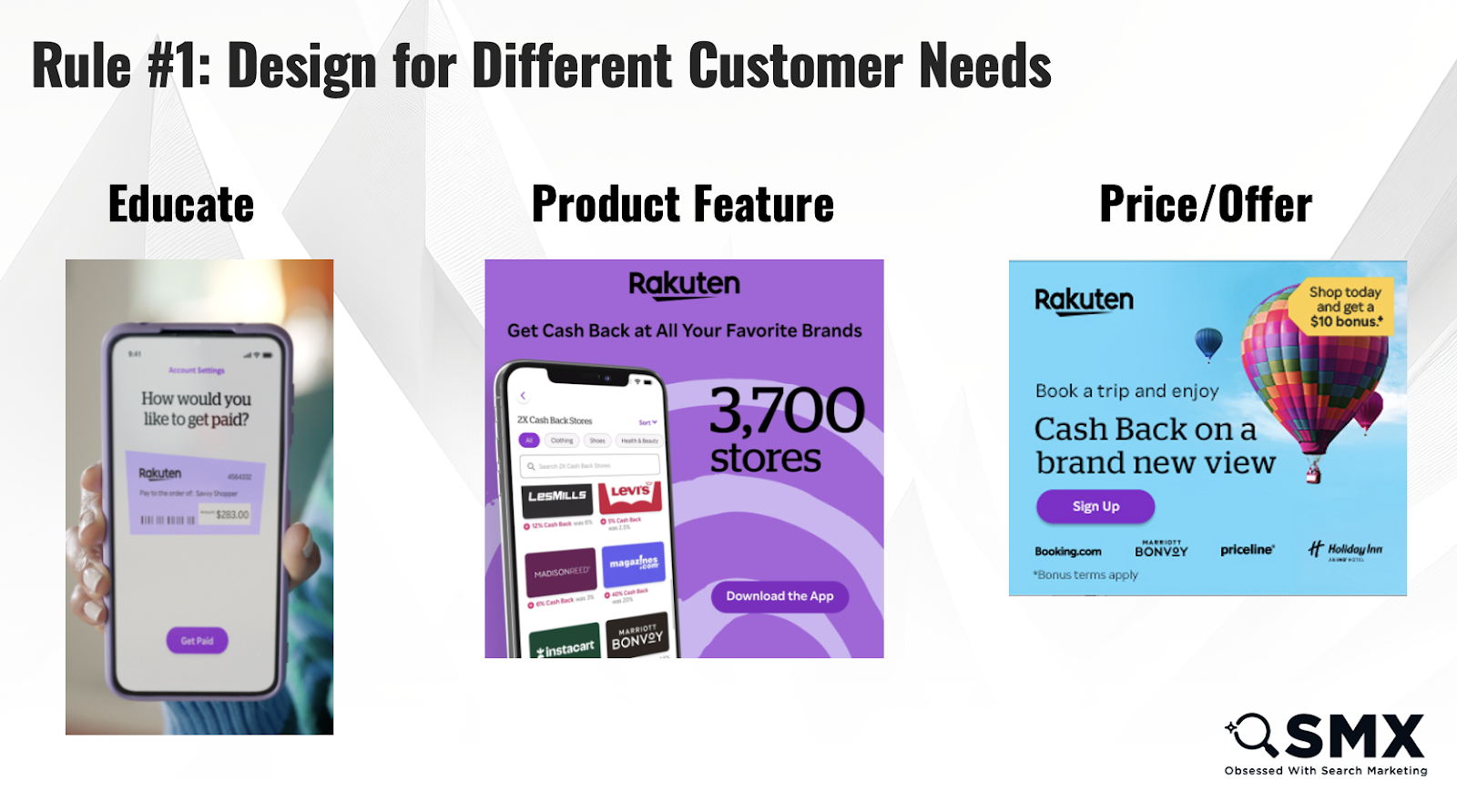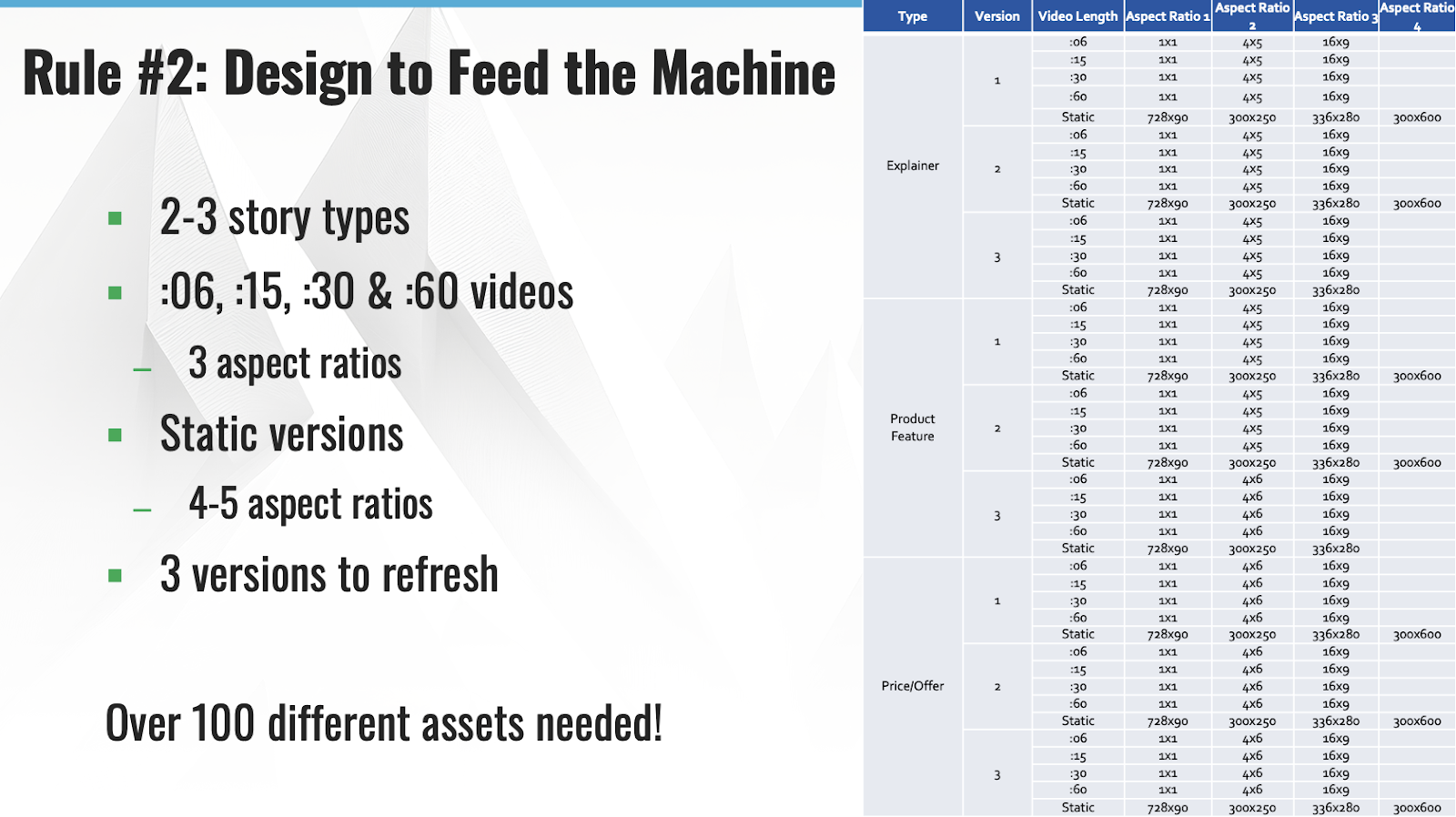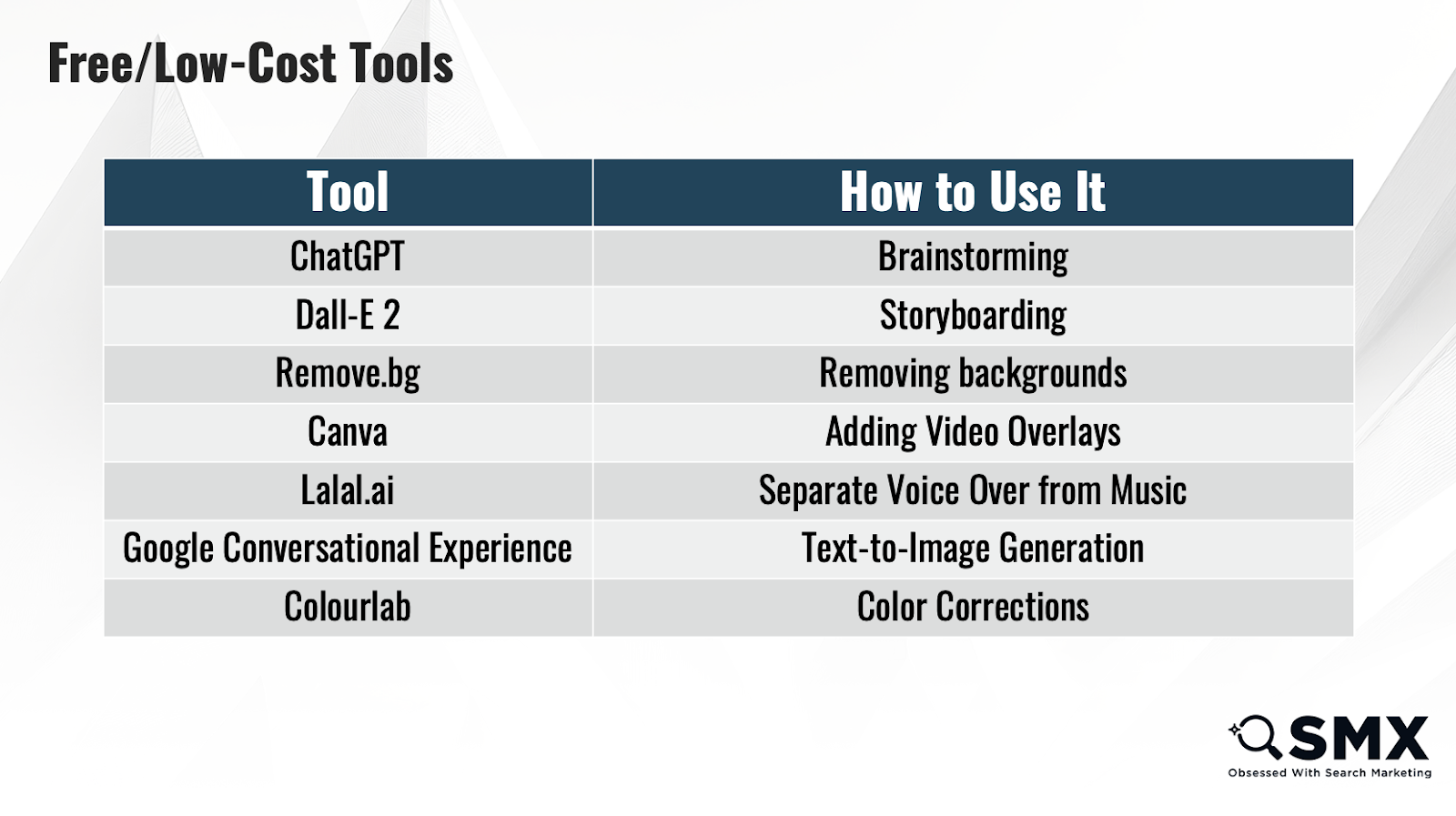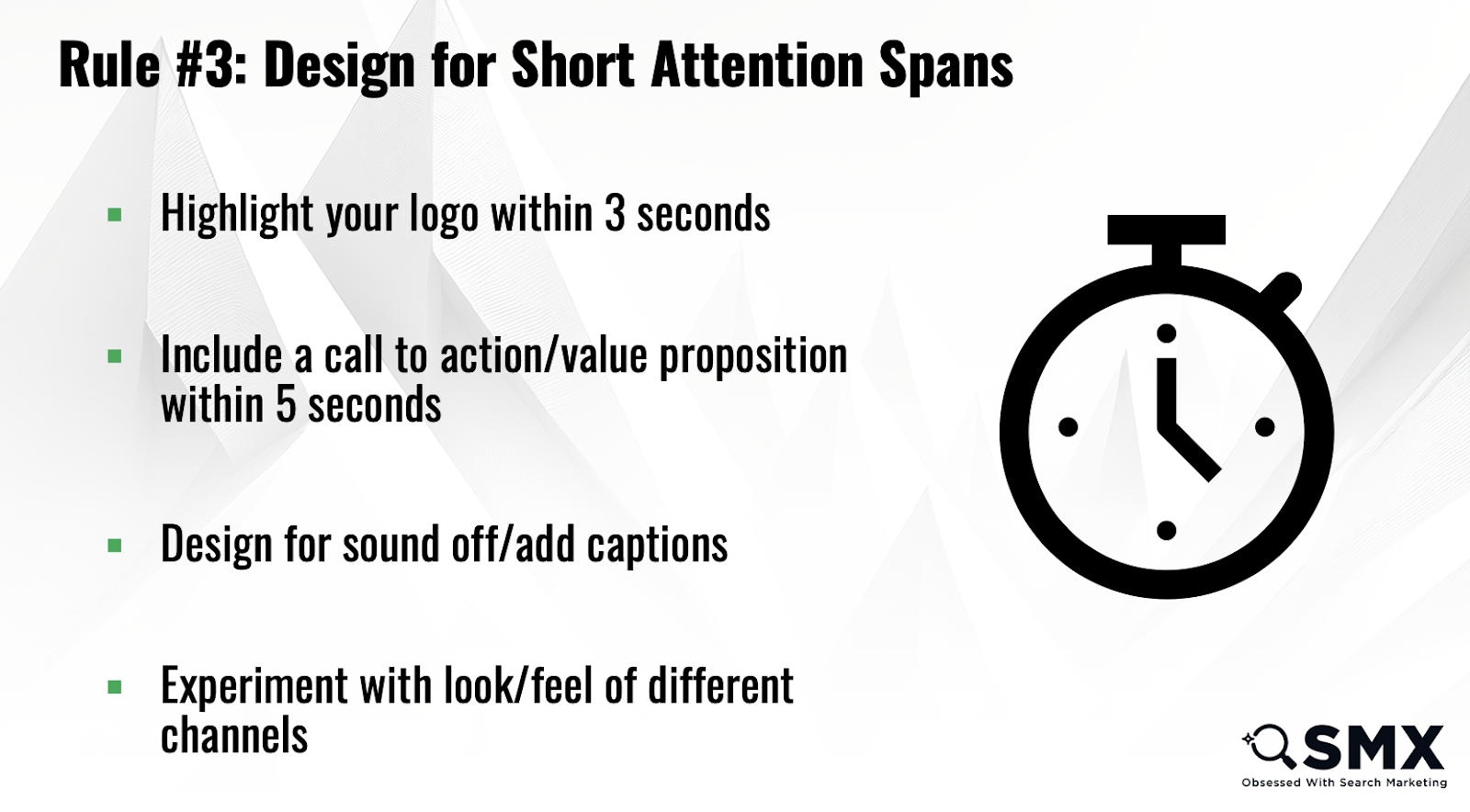Unlock AI’s potential in paid media creative
A look at the latest AI-driven advancements in PPC and creative design to optimize ad performance and engage your audience effectively.
Economic demands require marketers to do more with less. Today, small teams meet this demand by adopting AI to produce a greater output. Without AI, teams risk not meeting their goals due to limited resources.
Likewise, advancements in PPC have changed how teams think about technology’s impact. Methods of targeting, designing creative and structuring campaigns have shifted, thanks to machine learning.
The most successful campaigns require a strategic blend of creativity and an acute understanding of evolving customer behavior. Therefore, adapting human expertise and technology creates a competitive advantage.
Here are a few things you can do to strike a critical balance of human touch and AI to enhance your ad campaigns, engage your audience and drive superior results.
Align ads to the customer journey
Finding the right audiences at the right time is possible with the AI-assisted features of the ad platforms: Performance Max, Meta’s Advantage+ and LinkedIn’s Predictive Audience.
Each feature offers the same value: finding conversions with few targeting parameters based on user signals. The algorithms match your creative to the right audience, serving ads to the users who are most likely to convert.
Marketers can use these AI-assisted features to reach their desired outcome without performing more manual, low-impact activities. That said, there are two critical ideas to consider when using these audiences:
- Optimizing toward the right objective for your goals.
- Strong creative that resonates with your ICP and their journey.
These “smart” audience types can scale targeting capabilities and drive cheaper traffic and engagement, but the quality is questionable, especially in B2B. Still, don’t be afraid to test.
Cheap costs are a trade-off for broader targeting. You should consider, “Are you willing to cast a wider net if you know the right people are being reached alongside some less-qualified traffic?”
To resonate with a quality audience, humans must guide AI targeting with strong messaging and designs for audience engagement.
Ensure your message isn’t too broad or too niche and develop for different customer needs. You must have ad creative that:
- Educates: This content should focus on your brand and foster education and awareness. Consider video, blog posts, or other lower-intent content pieces.
- Explains value: These ads tout the product/solution in some way and drive directly to a declared intent page on your website.
- Lays out price and/or offer: Best used with a warm retargeting audience. These ads are for users ready to purchase, sign up or talk to sales.

Run all three types concurrently to reach the right audience with the message they are ready for.
Dig deeper: AI and Google advertising: What’s next?
Feed the machine
With AI broadening audiences and your brand competing hard for attention, designing for all the possible placements your ads can serve is important.
Dig into your data to determine which channels and placements work and maximize the available headlines, descriptions and creative options.
You risk limiting your audience pool if you don’t test extensively with various sizes and formats.
Aim for variety while adhering to your brand guidelines. Algorithms need to detect significant differences in the creative to test successfully.
Single-element testing (i.e., green vs. blue) will fatigue the creative faster and cause the audience to ignore the ads. Test varying concepts and designs (i.e., people vs. laptop), always applying previous learnings to new iterations.
Now more than ever, there are more placements on advertising channels to serve ads on. To keep up with various formats across several platforms while catching and holding consumer attention, you may need over 100 different assets for one campaign.

Time and resource constraints are common in this field, so remember quality over quantity. If you can only design a few creative iterations, make them your best.
Generate more output by saving time with generative AI tools like ChatGPT for:
- Creative concepts and ideation.
- Ad copy.
- Localization/translation.
- Audience research.
- HTML5 code generation.
While all of this creative testing sounds like more work, AI features within design tools are helping teams complete tasks in a fraction of the time it used to take.
Here are a few ways AI can speed up creative production:
- Brainstorming preliminary ideas.
- Storyboarding.
- Remove or fill backgrounds.
- Change aspect ratio.
- Photo editing.
- Vector creation.
- Color correction.
- Subtitle generation.
Free and low-cost tools are available to teams on tight budgets.

It’s critical that while AI is used for efficiency, you always prioritize authenticity.
You should never rely on AI for the final product; rather, you should use it as a guide or way to accomplish a task faster.
Always review AI’s work thoroughly and keep your brand tone and voice at the forefront of all designs and messaging.
Design for short attention spans
Teams shouldn’t waste efforts designing content that won’t perform well. Think about the types of content that your audience enjoys consuming and engaging with.
Users are consuming more video than ever, with 92% watching videos each week, according to Statista.
With views and engagement climbing, consumers rely on video for information, not just entertainment. Among the highest-consumed video categories are:
- Tutorials or how-tos.
- Educational content.
- Product reviews.
Algorithms prioritize video to keep users engaged in-platform. Including video in your content mix can improve brand reach and engagement.
Even B2B audiences are consumers at the end of the day so don’t skimp out on channels like Facebook and Instagram.
Video can amplify your narrative and get your brand in front of an audience in the format they are comfortable consuming, but you must be concise.
The attention span of the Gen Z generation is down to 2.8 seconds. AI favors shorter videos to align with consumer behavior. 15 to 30 seconds is the sweet spot, especially for cold audiences.
You need to tell your story quickly. Move the story arc forward to capture attention within the first five seconds of the video and keep it interesting enough to hold their attention in the middle.
The outdated format for storytelling would save that climax for the end, but it’s important to build up to that peak very quickly before the user scrolls on.

Dig deeper: Why video is key to building brand identity and engagement
Harness AI for efficient paid media campaigns
Brands are now like publishers in the speedy way they need to deliver content.
Now is the time to embrace AI as a time-saving tool for your team and to help you keep up with the volume of options the algorithms need to find the right audiences.
Get leaders and creative stakeholders on board with quantifiable results that prove the impact of these efforts.
Keep up with your audience, invest in channels where they spend time and serve content in a familiar format. Feed platforms the best content possible and ensure a frictionless buying experience for your customers.
Guide AI to serve as an extension of your team, helping you accomplish your goals with meaningful outputs.
Contributing authors are invited to create content for Search Engine Land and are chosen for their expertise and contribution to the search community. Our contributors work under the oversight of the editorial staff and contributions are checked for quality and relevance to our readers. The opinions they express are their own.
Related stories